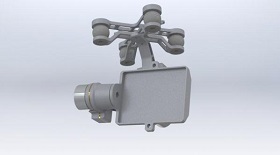Structural function of the universal joint
The structure and function of the universal joint is somewhat similar to that of the joints on the limbs of the human body. It allows the angle between the connected parts to vary within a certain range. In order to meet the power transmission and adapt to steering and automotive running up and down caused by the jump angle changes, front drive vehicle drive axle, half shaft and wheel shaft are often connected by universal joint. However, due to the limitation of axial dimension, the required angle of deviation is relatively large, and a single universal joint can not make the output shaft and the shaft into the instantaneous angular velocity is equal, which is easy to cause vibration, exacerbates the damage of components and produces a lot of noise, so a wide range of constant-speed universal joints are widely used. In front-drive vehicles, each half-shaft uses two constant-speed universal joints. The universal joints near the transmission axle are the inner half-shaft universal joints, and the outer half-shaft universal joints are the outer half-shaft universal joints. In the rear-drive vehicle, the engine, clutch and transmission are mounted on the frame as a whole, and the drive axle is connected with the frame by elastic suspension. There is a distance between the two, which needs to be connected. The unevenness of the road in the running of the automobile causes the jump of the road surface, the change of the load or the difference between the two assemblies, which will make the angle and the distance between the output shaft of the transmission and the input shaft of the main reducer of the driving axle change. Therefore, the cardan joints of the rear-drive automobile adopt double cardan joints, and each end of the transmission shaft has a double cardan joint. The function of the universal joint is to make the angle between the two ends of the drive shaft equal, so as to ensure that the instantaneous angular velocity between the output shaft and the input shaft is always equal.
Welcome to the Mechanical parts Exhibition.



